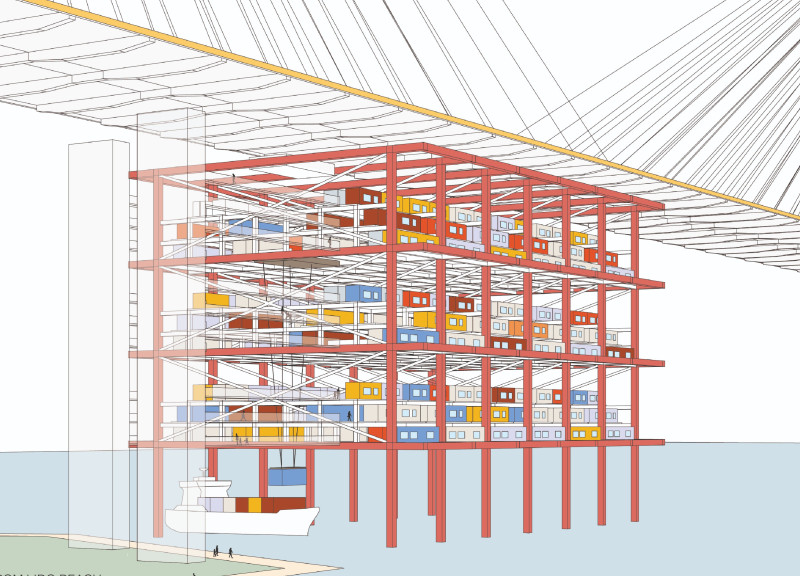5 key facts about this project
At its core, the design embodies an innovative approach to space-making, prioritizing connectivity both internally and externally. The project is intended for [insert function or purpose], effectively serving its intended community while adapting to the specific requirements inherent to that function. The layout accommodates various activities, ensuring fluid movement throughout the space and encouraging collaboration and social interaction.
The architectural design features a well-considered use of materials, which significantly contribute to the overall character of the project. Concrete is a primary material, chosen for its durability and capacity to both define structure and create inviting forms. The extensive use of glass not only enhances the aesthetic appeal but also improves the functionality by maximizing natural light, thus reducing dependency on artificial lighting. In addition, wood elements introduce warmth and texture while also respecting the environmental ethos of the design. Steel accents provide structural integrity and outline the modern aesthetic of the building, while brickwork ties the project back to regional architectural traditions, further enriching its contextual relevance.
Attention to detail is evident throughout the interior spaces, where the organization of rooms caters to both privacy and social engagement. The interplay of open and partitioned areas allows for various levels of interaction, accommodating both concentrated work and collaborative efforts. Features such as flexible layouts and adaptable spaces enable the building to meet evolving needs, making it a forward-thinking design that acknowledges the fluid nature of modern life.
Moreover, the project's landscaping is integral to its overall success. The outdoor spaces are not merely adjuncts but are carefully integrated into the architectural narrative. Thoughtful landscape design, characterized by native plant selection and sustainable features, allows for an immersive experience that invites users to engage with nature. Areas for relaxation and interaction are purposefully placed to enhance the everyday experience, making the environment friendly and welcoming.
A noteworthy aspect of this architectural design is its commitment to sustainability. The incorporation of eco-friendly technologies such as solar panels, rainwater harvesting systems, and energy-efficient materials demonstrates a conscientious approach to environmental stewardship. This commitment resonates throughout the project, reinforcing the idea that architecture can contribute positively to both its inhabitants and the planet.
What sets this project apart is not just its aesthetic quality or functional capabilities, but its ability to foster a sense of community. The design encourages people to gather, collaborate, and create, reflecting a progressive understanding of how modern architectural spaces should serve their occupants. The thoughtful integration of modern design elements with traditional materials and techniques offers a refreshing perspective on the possibilities for future architectural endeavors.
In exploring the architectural plans, sections, and overall design, readers are encouraged to take a closer look at how the project embodies a contemporary vision grounded in practical considerations. Delving into the specifics will reveal a wealth of architectural ideas that inform the design choices made throughout the project, illustrating how it successfully balances modernity with context and purpose. This examination promises to offer a deeper appreciation of the architectural nuances that define this remarkable endeavor.























